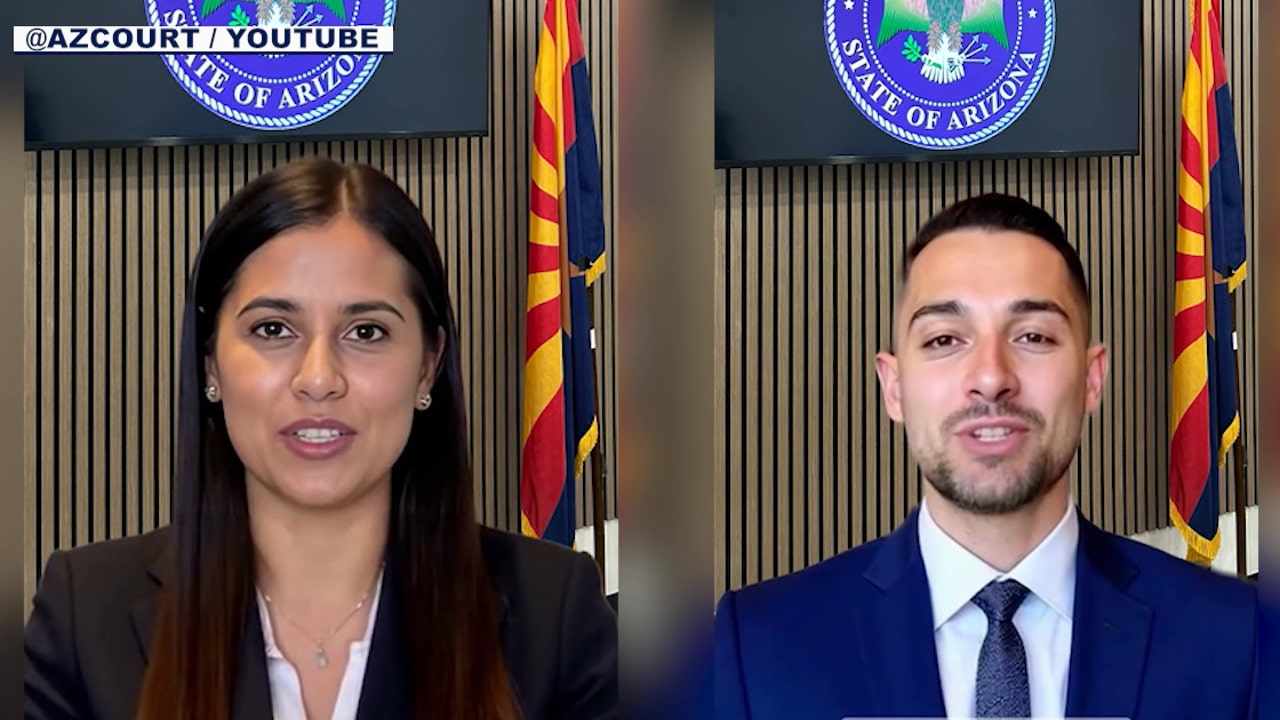

Understanding “Too Many Requests”: A Legal Perspective on Digital Access
The digital world is changing rapidly, and with it come challenges and questions that require careful legal consideration. When an error message states “Too Many Requests,” it may seem like a mere technical hiccup, but behind that message lies a web of legal issues, policy decisions, and questions of digital rights. In this opinion editorial, we take a closer look at how legal frameworks interpret such server responses, the responsibilities of service providers, and crucial perspectives on managing your way through the tricky parts of online service denial. We will explore the implications of digital regulation in a nuanced manner, ensuring we pay attention to every subtle detail of this issue.
The message “Too Many Requests” might evoke images of spam or abuse of service, but more often than not, it signals that a system is working to protect itself, its data, and, ultimately, its users. At its heart, this error message represents the balance that must be maintained between ensuring service availability for everyone and protecting systems from overwhelming abuse. With this balance in mind, various legal and policy dimensions emerge that not only challenge our interpretation of digital accessibility but also raise questions about privacy, user rights, and accountability.
Legal Foundations Behind Automated Rate Limiting
At the technical level, rate limiting is a measure implemented by service providers to prevent misuse, ensure system stability, and secure sensitive data. Legally, however, rate limiting falls under the broader umbrella of protective measures. The legal framework variedly mandates that service providers must protect user data and system integrity while at the same time respecting the rights and freedoms of their users.
Protecting Digital Rights While Managing System Integrity
When a server issues a “Too Many Requests” message, it indicates that it has detected an unusual volume of activity from a particular client. Often, this is a safety measure to ensure that no single individual or automated process can monopolize the service. On the legal front, service providers must ensure their policies do not infringe upon basic digital rights such as freedom of expression and access to information. This balance, however, creates a set of tricky parts for regulators, lawyers, and tech companies alike.
Within this framework, there are some key considerations:
- Stakeholder Responsibilities: Service providers must protect their systems while ensuring fair access.
- User Accountability: Users may need to recognize that excessive requests might be flagged as a potential abuse of service.
- Privacy Implications: Logging details such as client IP addresses (e.g., 88.198.184.120) can raise questions about the need to balance system security with data protection laws.
Legally speaking, the responsibility to secure systems without infringing on privacy rights is a delicate dance. In many jurisdictions, laws such as the General Data Protection Regulation (GDPR) in Europe require that any personal data that is collected, even indirectly, is treated with utmost care, secure storage, and transparency. When an IP address is logged, questions can arise about how much personal information is derived and how that information is used. Thus, the seemingly simple message “Too Many Requests” is tied up in subtle details that have far-reaching consequences.
Interpreting Server Messages: Understanding the Hidden Complexities
An error message might be viewed as nothing more than a temporary inconvenience, yet its implications can be both subtle and significant. By taking a closer look at these messages, legal experts can stockpile insights that shape policies to improve system resilience while protecting individual rights.
Server Responses and the Law: A Dual-Edged Sword
Server responses such as “Too Many Requests” serve as a dual-edged sword. On one side, they act as essential safeguards designed to keep systems secure in an ever-evolving digital environment. On the other hand, they can also restrict legitimate access if the underlying measures are too rigid. The legal challenge here lies in the act of drafting policies that are both super important for maintaining digital security and yet sufficiently flexible to accommodate genuine user needs.
This challenge is particularly evident when we consider the following points:
- Automated Decisions vs. Human Oversight: Many protective mechanisms operate automatically, with little room for human intervention. This lack of oversight can lead to situations where legitimate users are unjustly penalized.
- Policy Transparency: Users need to understand the reasons behind request limitations. Without clear communication, users might interpret these measures as off-putting or intentionally punitive rather than protective.
- Legal Redress: In cases where automated responses harm users, there must be a clear legal pathway to redress. Legal frameworks are often slow to adapt to the technological twists and turns of digital services, creating a gap between technology and law.
These dilemmas can be boiled down into the fine points of legal interpretation. While technology aims to protect, the lack of an appeal process or human review for these automated decisions often leaves users feeling that their rights have not been fully considered. The legal system must, therefore, find a way to balance technological effectiveness with the need for fairness and oversight.
Privacy Concerns in Digital Service Interactions
Logging and monitoring digital activity play a key role in defending against misuse and cyber threats. However, recording details like IP addresses raises several privacy issues that can be nerve-racking for everyone involved. Laws surrounding data collection and usage are super important in maintaining this balance, ensuring systems are protected without compromising on user privacy.
Balancing User Tracking with Data Protection Laws
When service providers log a client’s IP address (for instance, the 88.198.184.120 example), they are treading a fine line between ensuring security and respecting individual privacy. Data protection laws in many parts of the world are clear on the principles of data minimization and purpose limitation. These principles mean that any data collected must be restricted only to what is necessary for the intended purpose and must be securely managed.
A closer analysis of privacy issues in these contexts reveals several key challenges:
- Consent: Users should be informed about what data is collected and why. Without explicit consent, data collection practices risk falling foul of established data protection laws.
- Retention: Determining how long such data should be stored poses a risk. Retaining data for too long can escalate potential data breaches, while deleting it too quickly might complicate necessary investigations.
- Transparency: A clear, accessible privacy policy is essential. Without transparency, users may find it overwhelming or off-putting to trust a system they cannot fully understand.
In practical terms, service providers must juggle the need to log data for protection against the legal imperative to protect personal privacy. This calls for a judicious approach where data is handled with care, ensuring it is used only for the intended purpose and then disposed of securely or anonymized appropriately.
Legal Accountability in Automated System Responses
The emergence of automated mechanisms to limit requests has introduced additional layers of legal accountability. When a system issues a “Too Many Requests” error, it raises questions about who is responsible when automated actions affect human lives. The conversation surrounding responsibility is tangled with issues such as transparency, user notification, and the potential for legal redress.
Documents and Evidence in Automated Decision Disputes
In situations where automated decisions have resulted in the blocking or restriction of service, users may have a legitimate interest in contesting those decisions. Courts are increasingly being asked to interpret these automated responses in light of established legal principles. The challenge is in proving that the automated system acted in a way that was either arbitrary or insufficiently considerate of the user’s actual intent.
Key points in raising legal accountability for automated decisions include:
- Documentation: Keeping detailed logs of how and why a system issued a particular response can provide invaluable evidence in legal disputes.
- Policy Clarity: Clear, unambiguous terms of service that outline the conditions under which these protective measures are deployed can help protect both the user and the service provider.
- Appeal Mechanisms: Instituting a way for users to challenge decisions made by automated systems is essential. Without an effective appeals process, systems run the risk of becoming overly punitive.
In many ways, the fine points of legal accountability in the context of automated systems are a reflection of larger debates in the realm of digital ethics and governance. It becomes a matter of ensuring that while technology rapidly evolves, legal safeguards remain robust enough to protect human interests, even when intercepted by algorithms.
Challenges in Policy Development: Protecting Both Service Integrity and User Rights
One of the most significant legal challenges today is forging policies that simultaneously protect system integrity and uphold user rights. This is particularly evident when discussing the management of request limits and overall system access in the digital sphere.
Essential Elements for Drafting Balanced Online Service Policies
Legal policymakers must consider several key aspects when designing regulations for online services. These regulatory pieces must address the issue of automated system responses while ensuring that they do not unfairly restrict service access. The main areas to consider include:
- Fair Access: Legal guidelines should ensure that service providers design mechanisms that are both effective and fair. This involves setting clear thresholds and providing users with information on why and when they might be temporarily blocked.
- Data Collection and Usage: With stringent data protection laws in place, it is crucial for companies to meticulously manage how they log client information. By doing so, they can avoid potential pitfalls that could lead to legal consequences.
- Appeals and Remediation: Systems should be designed with processes in place to offer redress for users unfairly penalized by overzealous automation. When a user feels that their access has been unjustly limited, there must be a clear, accessible path to get into a resolution process.
A common strategy to address these challenges is to involve multiple stakeholders in the policy-making process. This can include input from legal experts, technology professionals, human rights advocates, and representatives from user communities. By collecting diverse perspectives, policymakers can craft rules that are not just reactive, but both comprehensive and fair.
The table below summarizes some core considerations that need to be managed when creating or updating digital service policies:
| Policy Aspect | Key Points | Potential Legal Issues |
|---|---|---|
| Access Management | Fair thresholds, transparent criteria, automated vs. manual review | Risk of arbitrary exclusions; lack of remediation pathways |
| Data Logging | IP address logging, duration of data retention, data minimization | Privacy law violations; risk of misuse or breach |
| User Notification | Clear messaging regarding reasons for restriction and steps for redress | Potential for user confusion or perceived unfairness |
This table is a simplified model of the many interconnected elements involved in policy creation for online services. Every point carries its own weight and must be addressed in the context of both technology and the law.
Dealing with Overwhelming Digital Traffic: Automated Solutions and Legal Implications
As digital services continue to expand, the volume of online traffic is experiencing ever-increasing growth. While this surge in use demonstrates the importance and popularity of digital platforms, it also highlights potential legal vulnerabilities, particularly when systems must function under stressful conditions.
Strategies for Managing Surges in Demand
There are several effective strategies that service providers use to cope with periods of intense online activity. From simple rate limiting to complex load balancing, these approaches are designed to protect service availability. However, each tactic comes with its own set of legal twists and turns that merit careful consideration.
Below is a list of common strategies and the associated legal considerations:
- Rate Limiting: Automates the number of requests allowed per user within a set timeframe. Legally, this must be done transparently to ensure users know why access might be temporarily blocked.
- Load Balancing: Distributes incoming traffic across multiple servers. While largely technical, the legal aspects involve ensuring that user sessions and personal data are transferred securely between servers.
- Caching Strategies: Temporarily stores frequently requested data to reduce server load. Even here, legal issues such as data integrity and timeliness need oversight.
- Throttling: Gradually reduces the rate of requests when high traffic is detected. Service providers must be careful that throttling measures do not end up discriminating against certain users altogether.
Each of these methods plays a role in managing overwhelming digital traffic, and at the same time, presents its own layer of responsibility. The legal debate is whether these protective measures can be justified if they inadvertently hamper the free flow of information or if they are too prone to hindering legitimate use.
Balancing Digital Security and Fair Use: A Policy Debate
The digital landscape is full of tangles and ambiguous bits when it comes to ensuring both security and access. As the legal community and technology experts continue to sort out these debates, one thing remains clear: There must be a balance that does not sacrifice user rights for the sake of system integrity.
How to Ensure Fair Treatment in Automated Systems
For policies to be perceived as fair, they need to incorporate a range of measures that protect both the system and its users. Key elements of such fair treatment include:
- Clear Communication: Service providers must explain why actions like request limiting are necessary. When a “Too Many Requests” message appears, accompanying information should be available to help the user figure a path to resolve the issue.
- Effective Remediation Processes: If a user is affected by an automated system, guidelines should be established to challenge or seek a review of the decision. This provides legal recourse and helps maintain trust in the service.
- Adaptive Policies: As technology evolves, so too must the policies that regulate it. Continual review processes are essential to ensure that protections are not only up to date but also in tune with the shifting digital environment.
Policymakers in digital regulation are often required to work through many conditions that are both legally and technically loaded with issues. To ensure a fair and balanced approach, regulatory bodies may also:
- Organize public consultations to gather feedback from users and stakeholders.
- Collaborate with technology experts to understand the little twists of modern digital services.
- Implement pilot programs that test automated limitations in a controlled environment before wide-scale deployment.
This multi-faceted approach can help alleviate the potential for misunderstanding and ensure that any automated decisions are both legal and justifiable.
Looking Ahead: The Future of Automated Digital Policies
As we progress further into the digital age, the challenges of managing technological safeguards such as automated request limits will remain a central debate among legal experts, technologists, and policy makers. The conversation is set to evolve, prompting us to continuously poke around and re-evaluate both our legal systems and technological strategies.
Trends Shaping Future Policy Making
Several trends are likely to define the future landscape of automated policy enforcement, each carrying its own set of legal consequences:
- Enhanced Transparency: There will be a growing push for companies to not only implement robust digital protection measures but also clearly outline how these measures work. Legal standards may require that any automated response, such as “Too Many Requests,” be accompanied by detailed explanatory notes that are easily accessible to users.
- Increased Accountability: With the rise in litigation relating to digital access issues, legal authorities may begin scrutinizing the balance between automated decision-making and human oversight. Future regulations might mandate that every automated decision offers an option for human review.
- Data Protection Reforms: As privacy concerns evolve, so too will the legal landscape surrounding data collection. New legislation could further restrict how and when personal data, including client IP addresses, can be logged and used, ensuring a tighter coupling between security measures and data privacy.
- Adaptive Algorithms: The evolution of artificial intelligence and machine learning may allow systems to better differentiate between legitimate spikes in user activity and harmful practices. This, in turn, will demand legal frameworks that are both flexible and sufficiently protective of user rights.
The legal community must remain vigilant in ensuring that digital policies keep pace with these trends while preserving the foundational principles of fairness and transparency. These efforts will require an ongoing conversation between lawmakers, tech innovators, and everyday users.
Conclusion: Ensuring Fair Access in an Automated World
The seemingly innocuous error message “Too Many Requests” is far more than a fleeting technical glitch. It is emblematic of the broader concerns at the intersection of technology, law, and society. From the complexities of automated systems to the delicate balance between security and user rights, the layers of this issue are as tangled as they are important.
Legal frameworks must take into account the fine points of automated response systems. They have to address the need for security while ensuring transparency and fairness for users. Whether it is in the area of data logging and privacy or the accountability of automated decisions, addressing these areas remains a critical challenge—one that requires a collaborative effort between lawmakers and tech companies alike.
As we continue to work through the tricky parts of these issues, it is essential for all involved to recognize that technology and law are evolving hand in hand. The key to protecting digital spaces lies in ensuring that every piece of policy not only shields systems from harm but also supports the essential rights of individuals navigating the digital realm.
Looking to the future, we must strive for a balanced approach that embraces technological innovation while guarding against unfair automated restrictions. This involves ongoing evaluations, open dialogue between stakeholders, and a commitment to transparency and accountability at every level. Only through a comprehensive, flexible, and user-aware legal system can we ensure that digital protection measures serve their purpose without inadvertently hindering the free flow of information.
As we digest the many layers of the “Too Many Requests” message, let us take this opportunity to call for clear, thoughtful, and legally sound policies that consider every little detail of the digital ecosystem. Whether you are a policy maker, a technologist, or an everyday user, the lessons from this discussion are clear: Robust digital security measures must be balanced with transparency, fairness, and legal accountability, ensuring that innovation continues to thrive while individual rights are never compromised.
The discussion is far from over. With the accelerated pace of technological advancement, new challenges are sure to emerge. It is incumbent upon legal experts, policy makers, and service providers to continuously dig into the issues at hand, reassessing and adapting their approaches to ensure that the digital landscape remains as fair as it is secure. By doing so, we maintain a digital society where every user has the opportunity to engage freely and safely, and where legal safeguards protect all parties in an ever-changing environment.
In summary, a measured and transparent approach to managing automated responses is not just a technical necessity; it is a legal imperative. Whether it is through enhanced transparency of IP logging practices, continuous policy review, or robust data protection measures, the path forward is one marked by collaboration, continual learning, and an unwavering commitment to fairness. This is the future of digital regulation: a space where automated systems act as guardians of quality and security rather than obstacles to access, and where legal standards are intricately tied to the nuanced demands of modern technology.
As we move forward, it is critical that all stakeholders—users, service providers, legal experts, and regulators—continue to work together to find a path through the confusing bits and nerve-racking challenges of digital service management. By addressing each point transparently and considering every legal angle, we can set a strong precedent for digital governance that is adaptable, fair, and sustainable for years to come.
Originally Post From https://www.swiowanewssource.com/news/nation/article_b1b2288c-f712-5667-b439-4a7956b9c884.html
Read more about this topic at
What is the deal with “Rate Limit Exceeded” on twitter?
How to Fix Your Twitter Rate Limit Exceeded Error Message


